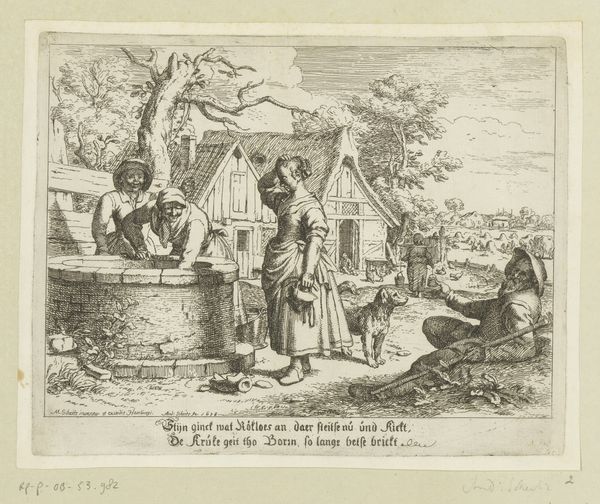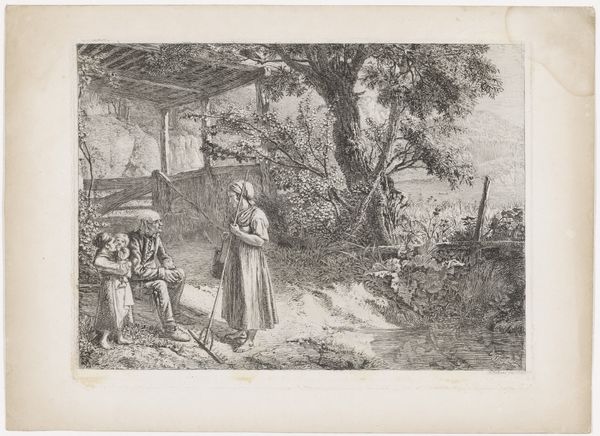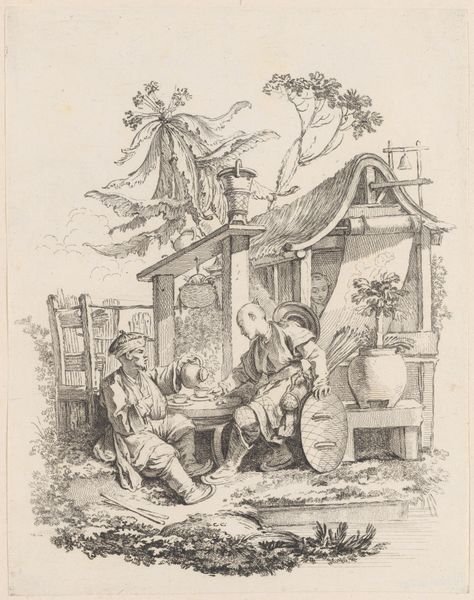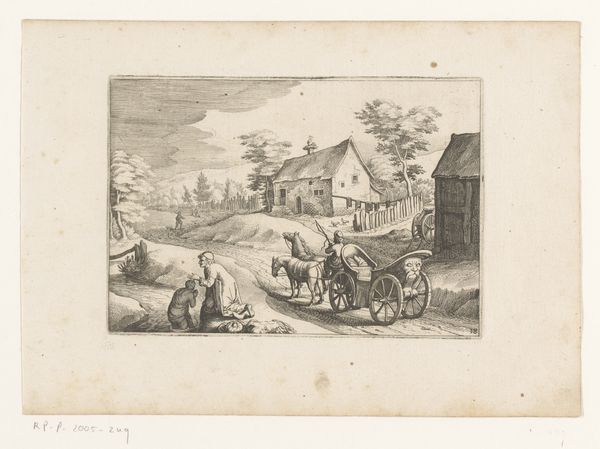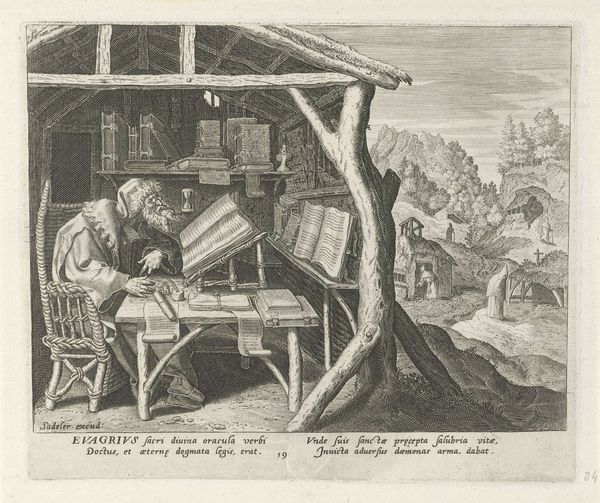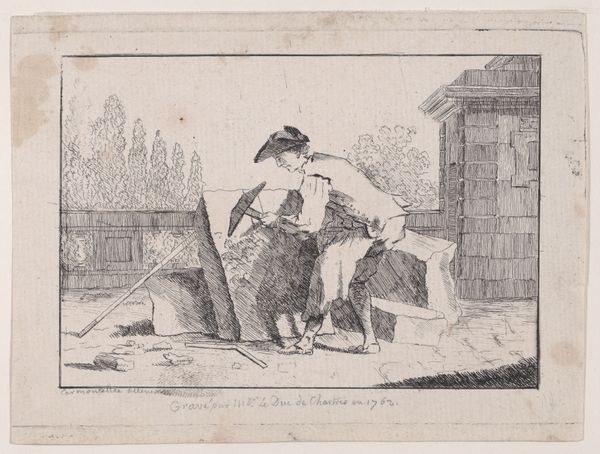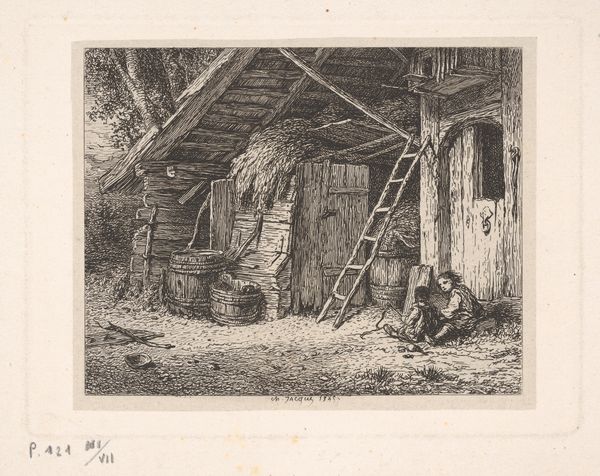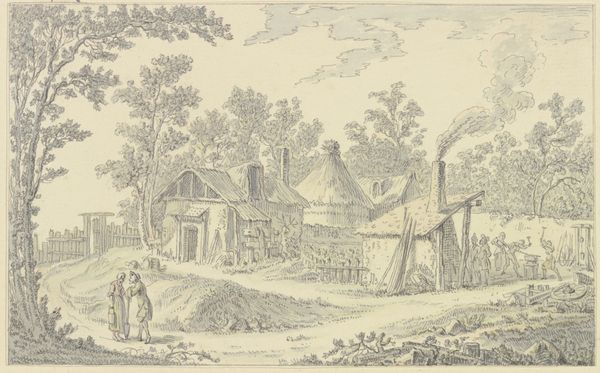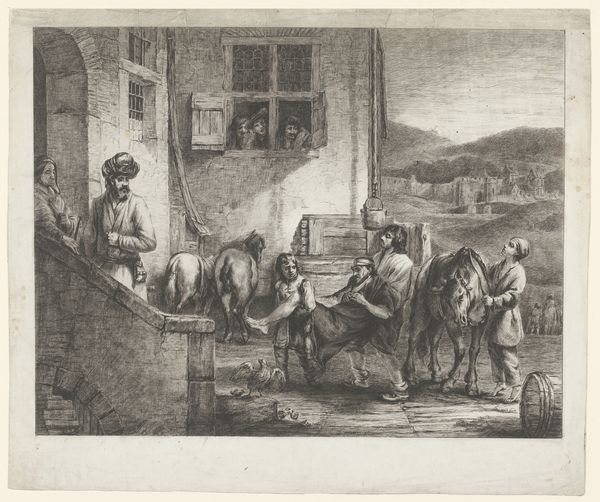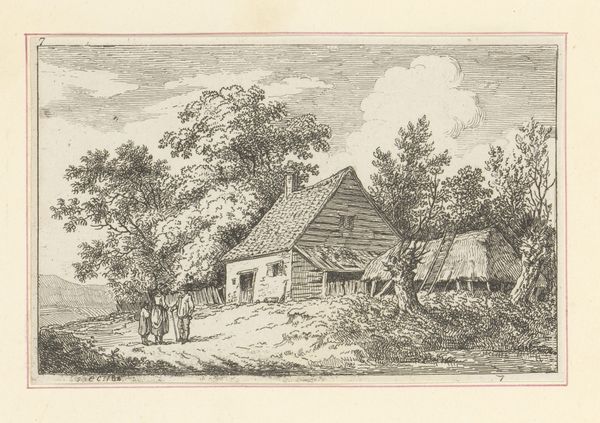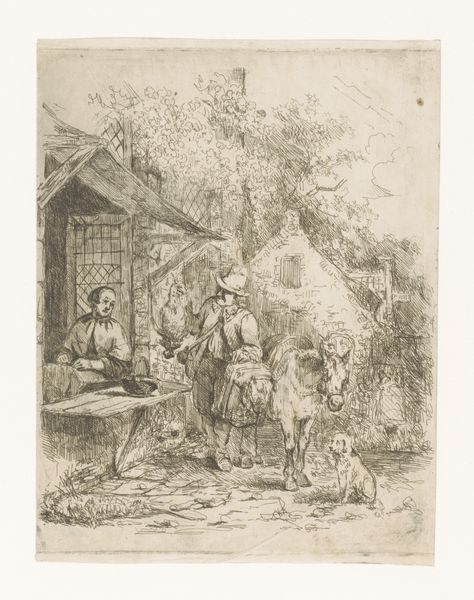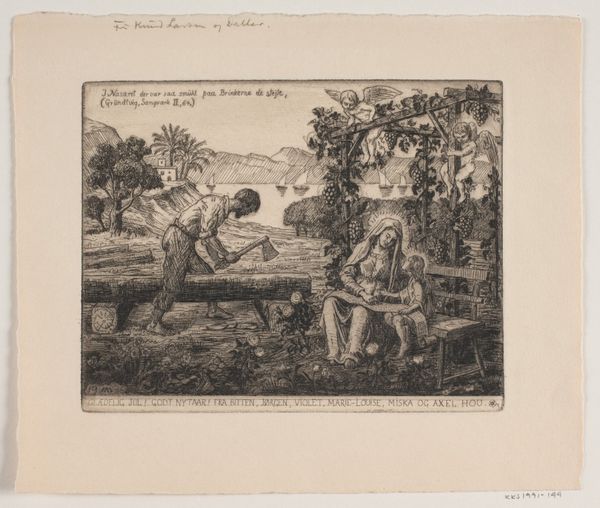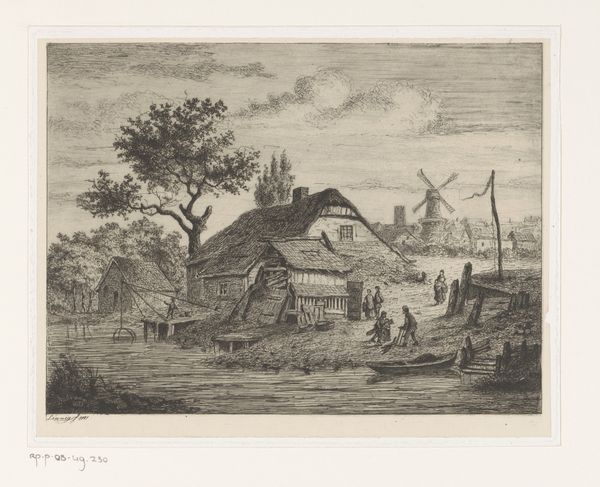
drawing, print, etching, engraving
#
drawing
# print
#
etching
#
genre-painting
#
engraving
Dimensions: 68 mm (height) x 129 mm (width) (plademaal)
J.F. Clemens made this print, "An open-backed vestibule in a building", in Denmark in the late 18th century. It depicts a domestic scene, rendered with the precision of the engraving medium. But what might this image tell us about the conditions of its production and reception? The interior is rustic, perhaps even impoverished. A mother nurses her child while another plays nearby. Chickens peck at the floor, while a man enters through a rough doorway that opens onto a cultivated landscape. The scene evokes a timeless image of rural life, yet it was made at a time of growing social and economic change. The late 1700s were marked by the rise of Enlightenment ideals and nascent industrialization. Could this image be read as a conservative counterpoint to these shifts, idealizing the simplicity of rural existence? As historians, we can research prints and other visual media to understand the social and cultural values of the time. We must consider the institutions and individuals that commissioned, collected, and consumed these images.
Comments
No comments
Be the first to comment and join the conversation on the ultimate creative platform.
